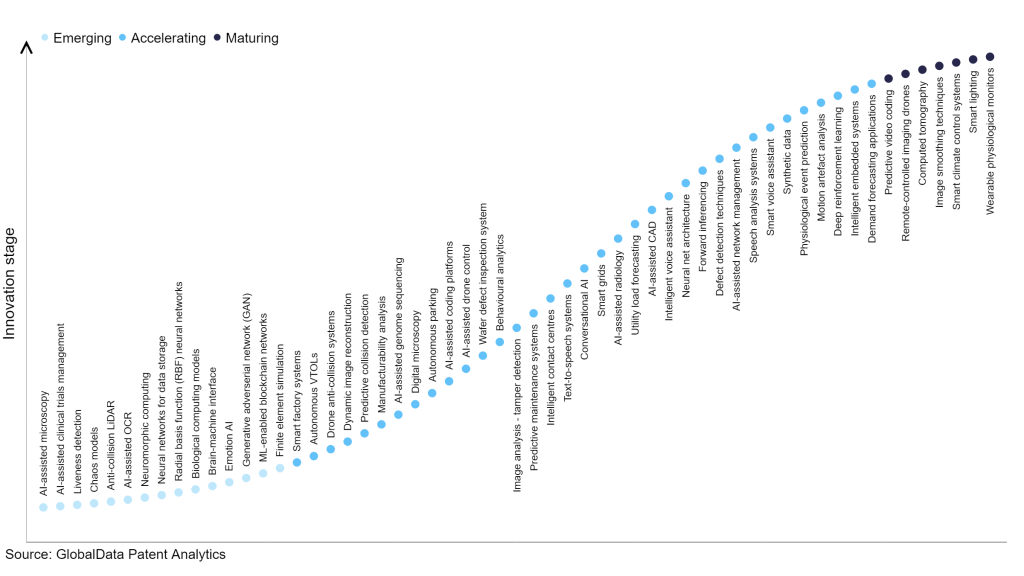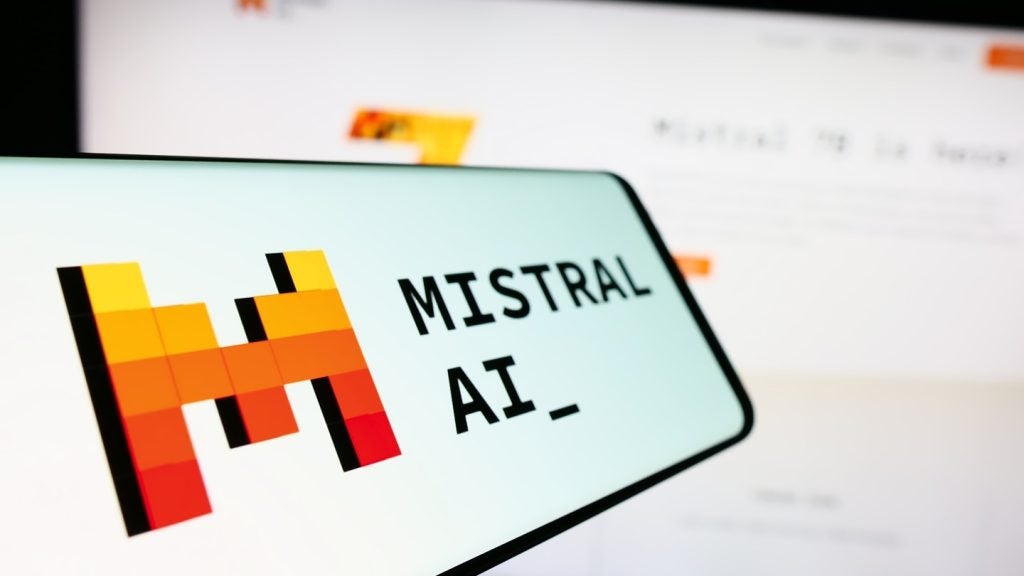The technology industry continues to be a hotbed of innovation, with activity driven by the increasing demand for artificial intelligence (AI) driven applications, the need for privacy and security in data handling, and the potential to overcome data scarcity challenges. This has resulted in the growing importance of technologies such as generative adversarial networks (GANs), variational autoencoders (VAEs), and data augmentation techniques, which enable the creation of high-quality and diverse datasets for AI applications. In the last three years alone, there have been over 3.6 million patents filed and granted in the technology industry, according to GlobalData’s report on Innovation in Artificial Intelligence: Synthetic data. Buy the report here.
However, not all innovations are equal and nor do they follow a constant upward trend. Instead, their evolution takes the form of an S-shaped curve that reflects their typical lifecycle from early emergence to accelerating adoption, before finally stabilising and reaching maturity.
Identifying where a particular innovation is on this journey, especially those that are in the emerging and accelerating stages, is essential for understanding their current level of adoption and the likely future trajectory and impact they will have.
300+ innovations will shape the technology industry
According to GlobalData’s Technology Foresights, which plots the S-curve for the technology industry using innovation intensity models built on over 2.5 million patents, there are 300+ innovation areas that will shape the future of the industry.
Within the emerging innovation stage, finite element simulation, ML-enabled blockchain networks and generative adversarial networks (GAN), are disruptive technologies that are in the early stages of application and should be tracked closely. Demand forecasting applications, intelligent embedded systems, and deep reinforcement learning are some of the accelerating innovation areas, where adoption has been steadily increasing. Among maturing innovation areas are wearable physiological monitors and smart lighting, which are now well-established in the industry.
Innovation S-curve for artificial intelligence in the technology industry

Synthetic data is a key innovation area in artificial intelligence
Synthetic data refers to computer-generated information that simulates real-world situations for testing and analysis. Though not real data, it serves purposes of techniques such as machine learning, artificial intelligence, and data visualization. Synthetic data is created by computer programs or algorithms to mimic real data, enabling researchers and developers to perform various tasks and experiments without relying solely on actual data.
GlobalData’s analysis also uncovers the companies at the forefront of each innovation area and assesses the potential reach and impact of their patenting activity across different applications and geographies. According to GlobalData, there are 330+ companies, spanning technology vendors, established technology companies, and up-and-coming start-ups engaged in the development and application of synthetic data.
Key players in synthetic data – a disruptive innovation in the technology industry
‘Application diversity’ measures the number of different applications identified for each relevant patent and broadly splits companies into either ‘niche’ or ‘diversified’ innovators.
‘Geographic reach’ refers to the number of different countries each relevant patent is registered in and reflects the breadth of geographic application intended, ranging from ‘global’ to ‘local’.
Patent volumes related to synthetic data
Source: GlobalData Patent Analytics
International Business Machines (IBM) is a leading patent filer in the synthetic data space. One of the company’s patents describes a system, method, and computer program for evaluating analogical patterns using natural language processing. The information source is analysed to identify terms related to analogical patterns, and deep analysis is applied to refine these terms based on semantic analysis, creating metadata. The generated interpretations of the analogical pattern terms and metadata are scored, with the highest-scoring interpretation selected for evaluating the analogical pattern.
Other prominent patent filers in the space include Microsoft and Baidu.
By geographic reach, AECOM leads the pack, followed by Los Alamos National Security and Sensity Systems. In terms of application diversity, Haystack Technologies holds the top position, followed by People.ai and Factual.
AI innovation in synthetic data helps to overcome data scarcity and privacy concerns. By generating artificial data that mimics real-world scenarios, AI enables more extensive training and testing of algorithms and models. Synthetic data also facilitates the development and evaluation of AI systems in domains where collecting real data is challenging or expensive. This innovation fuels advancements in machine learning, artificial intelligence, and data-driven technologies by providing a valuable resource for training, validation, and experimentation.
To further understand how artificial intelligence is disrupting the technology industry, access GlobalData’s latest thematic research report on Artificial Intelligence (AI) – Thematic Intelligence.
Data Insights
From

The gold standard of business intelligence.
Blending expert knowledge with cutting-edge technology, GlobalData’s unrivalled proprietary data will enable you to decode what’s happening in your market. You can make better informed decisions and gain a future-proof advantage over your competitors.







